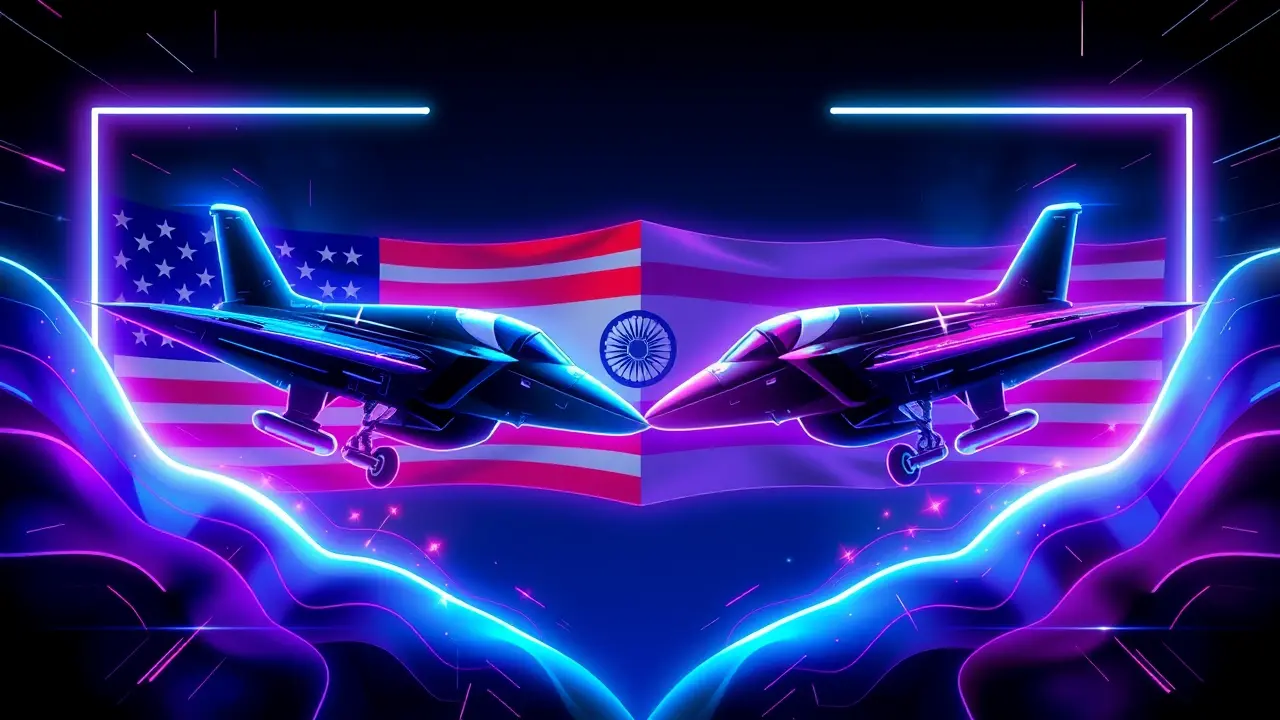
Politicsconflict & defenseArms Deals
India's Balancing Act Between US and Russia on Defense
RO
Robert Hayes
3 days ago7 min read
In a move that underscores the intricate geopolitical chessboard of the 21st century, India and the United States have inked a renewed 10-year defence framework, a pact that simultaneously reaffirms a strategic partnership while papering over the profound cracks caused by Delhi’s unwavering military dependence on Moscow. The signing in Kuala Lumpur acts not as a simple diplomatic formality but as a stark emblem of the delicate balancing act India must perpetually perform, a high-wire endeavour reminiscent of the non-aligned posture it championed during the Cold War, yet infinitely more complex in today's multipolar world.This agreement, while projecting an image of forward momentum in Indo-US relations, is fundamentally complicated by India’s status as the world's largest importer of Russian arms—a legacy of a relationship forged in the fires of the 1971 Indo-Pakistani war and solidified over decades, creating a deep-seated interoperability and logistical dependency that cannot be severed overnight by political fiat. Analysts point to the sheer scale of this entanglement: over 60% of India’s military hardware is of Russian origin, from its fleet of Sukhoi Su-30MKI fighter jets to its T-90 main battle tanks and its recently acquired S-400 Triumf air defence systems, the latter purchase triggering the looming spectre of US sanctions under the Countering America's Adversaries Through Sanctions Act (CAATSA).The American calculus, however, appears tempered by the overarching strategic imperative to cultivate India as a crucial counterweight to Chinese expansionism in the Indo-Pacific, a priority that often forces Washington to swallow its objections regarding Moscow. This creates a paradoxical scenario where the US seeks to arm India against one adversary while the very foundation of India’s defence readiness is built on hardware from another nation the US considers an adversary.The renewal of this framework, therefore, is less a celebration of unalloyed partnership and more a pragmatic acknowledgment of convergent interests amidst divergent alliances. It signals Washington's reluctant acceptance, for now, that pressuring India too forcefully on its Russian ties could backfire, potentially pushing Delhi closer into Moscow's—and by extension, Beijing's—orbit, thereby unraveling the very Quadrilateral Security Dialogue (Quad) architecture it seeks to strengthen.For India, the calculus is one of strategic autonomy and necessity; its military cannot afford a sudden rupture with Russia, which provides not just equipment but also spare parts, maintenance, and technology transfers that American defence contractors, with their stricter export controls and more expensive offerings, have been historically reluctant to match. The path forward is fraught with peril.Every new American F-15EX or MH-60R helicopter sold to India must coexist with Russian MiG-29s and Kamov helicopters, creating a logistical nightmare and a command-and-control mosaic. The long-term sustainability of this duality is questionable, and the renewed defence pact can be seen as a holding pattern, buying time for India to slowly diversify its arsenal and for the US to navigate the treacherous waters of great-power competition. The true test will come when the next crisis erupts—be it a fresh confrontation with China along the Himalayan border or a further escalation in Ukraine—forcing both Delhi and Washington to make choices that this carefully constructed framework may not be robust enough to contain.
#India
#United States
#Russia
#defense agreement
#arms deals
#strategic partnership
#balancing act
#featured
Stay Informed. Act Smarter.
Get weekly highlights, major headlines, and expert insights — then put your knowledge to work in our live prediction markets.
Comments
It’s quiet here...Start the conversation by leaving the first comment.
© 2025 Outpoll Service LTD. All rights reserved.